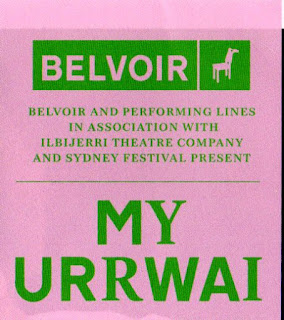Review by
© Jane Freebury
The director has conjured up some dark fantasies, like the political allegories The Devil’s Backbone and the very wonderful Pan’s Labyrinth, but this time it’s different, as he says himself. And surely, Hawkins has no regrets at all about signing on to this dazzling adult fairy tale. It is outstanding on many levels, reflected in the number of Oscar nominations.
The Shape of Water is set in a shadowy, green-tinged world – that is, early 1960s America in the grip of Cold War paranoia - where everyone, from the janitor to the boss, has a secret. The mood is perfectly rendered in expressionist chiaroscuro though the palette warms when Elisa (Hawkins) is on screen.
Elisa has her own sweet approach to life even though she had the misfortune to grow up an orphan and she cannot speak. A creature of habit, she cleans her shoes every day before work and takes a bath. She times this – she is obviously a water person - but is regularly a little late in clocking on for work at the research facility where she is a cleaner, for reasons that will become apparent.
In her life she has her loyal friend at work Zelda (Octavia Spencer), a kind neighbour Giles (Richard Jenkins), and in between she can romance herself with Hollywood musicals and absorb the ambience of the cinema downstairs. The sensitivity of Hawkins’ performance and del Toro’s skills orchestrate the utterly plausible—she falls in love with a scaly creature from a lagoon in the distant Amazon. The amphibious man has been captured and is a ‘top secret’ asset in a tank at the lab.
More man than fish, the hunky creature she falls for has a humanoid face, arms and legs and can live on land for limited periods. Inside his skin-tight scaly suit, with webbed, clawed hands and dorsal spine, the actor Doug Jones creates a marvellously imposing figure, frightening but obviously terrified.
Showing little interest in this extraordinary creature and treating it as a threat, CIA officer Strickland (Michael Shannon, performing even more extreme than usual) wants to beat it into submission and then dissect it. That is before he has worked it over with a cattle prod.
His attack on 'amphibious man', fuelled by irrational fear, is the complete antithesis of Elisa’s approach. From the very first, even when the creature lashes out at her from behind the glass of his tank, she doesn’t seem to have the slightest fear—which is rather surprising, really. They have things in common, and with boiled eggs and a bit of jazz from Glenn Miller, she brings him round.
The Shape of Water becomes a love story that transcends difference, and we are all in raptures over the gorgeous monster from the deep. Glorious to look at and experience as an integrated sensory experience, the film leaves behind an afterglow, even if the good and evil binaries of the fairy tale leave little to mull over after the closing credits. It’s all about feeling, and is a swooning, romantic experience that is rarely seen on screen.
Although del Toro does not let us off entirely lightly in the few moments of savage violence here, it is only as a brief interlude. There is wit and humour and other means of seduction to show that this master of gothic horror and dark fantasy, who cut his directorial teeth on monster movies, knows exactly how to keep his audiences under his spell.
Rated R, 2 hours 3 mins
4.5 Stars
Also published on Jane's blog and broadcast on ArtSound FM 92.7








